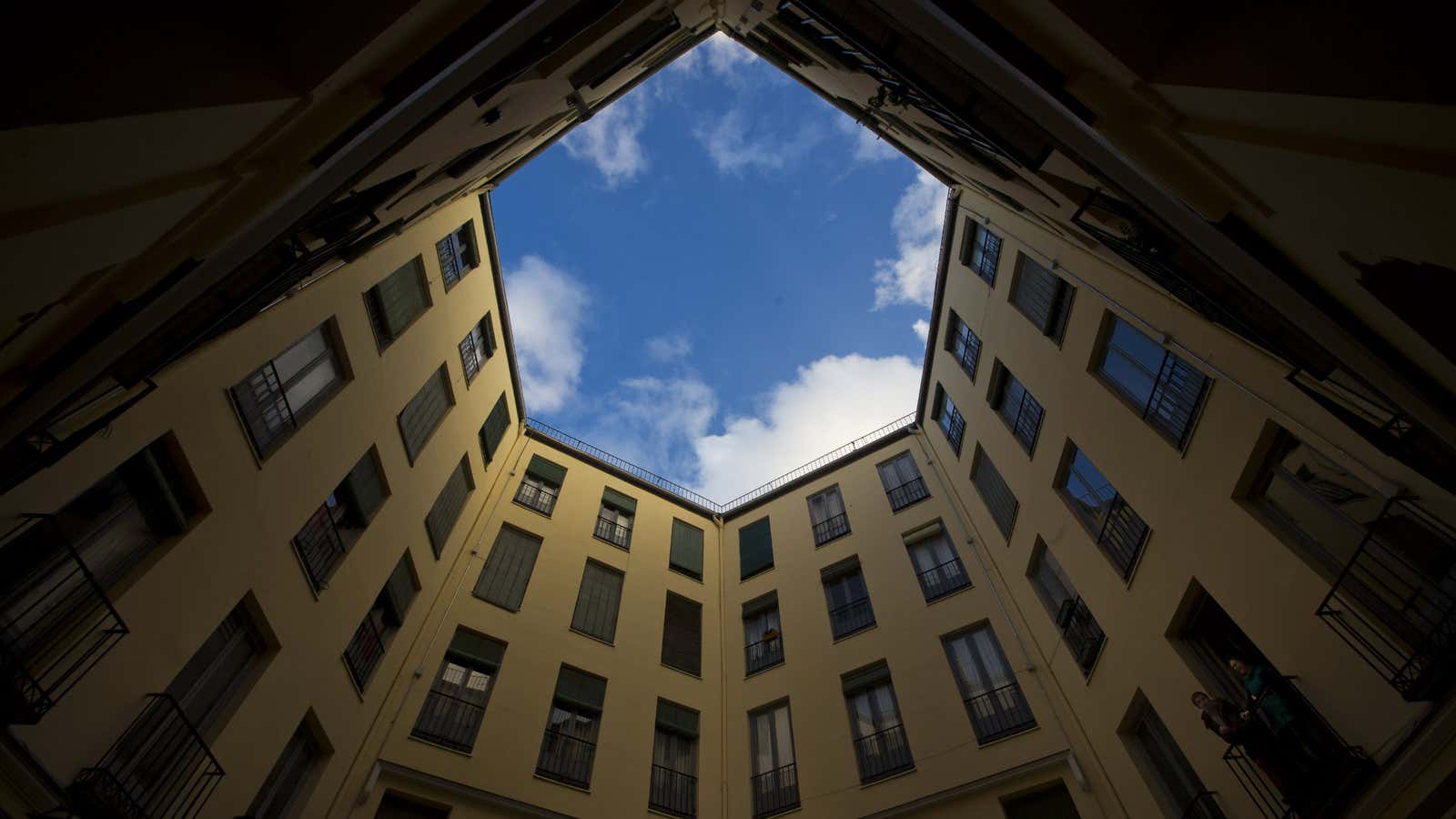For the last two years, Spain has been in the thick of a massive housing crisis. There are somewhere between 700,000 and a million new, unsold homes in the country. (The U.S., by contrast, with five times the population of Spain, has only 145,000 new unsold homes.) Spanish banks hold nearly 200 billion euros worth of bad mortgage loans.
So Spain is offering a deal. Buy a house worth more than the mean home price and receive something that had been, until now, priceless: Spanish residency papers.
Spain isn’t the first European country that’s tried to stimulate the housing market through immigration incentives. Portugal offers residency papers for a 400,000 euro property investment; Ireland for 500,000. Hungary offers residency to anyone who buys 250,000 euros worth of specially issued government bonds. But so far, the Spaniards are setting the bar the lowest. For 160,000 euros, a Spanish house — and a Spanish home — can be yours.
It’s a proposal, colloquially known as “buy a home, get a visa,” that’s been touted by a number of economics writers, including Thomas Friedman, Matt Yglesias, Tyler Cowen, Alex Tabarrok, and others.
Since the programs in Portugal and Ireland only began earlier this year, there’s scant evidence yet of how well they’re working. One concern among European Union states is that open borders within the Schengen Area means that one country’s radical immigration policy has far-ranging repercussions. In Ireland, for example, supporters have advertised the “Immigrant Investor” program as a fast route to E.U. citizenship — “the Irish passport is one of the most sought-after travel documents in the world” — an approach that’s unlikely to sit well in countries like Denmark and Finland that retain strict limits on immigration.
Other opponents might contend that such programs offer “citizenship for sale,” a dangerous step towards monetization of nationality.
In reality, though, it’s merely a small addition to existing visa programs that reward foreign investment of all kinds. In Ireland, donations to the arts, low-interest immigrant bonds, and venture capital funding can all lead to residency papers. Through the EB-5 program, the U.S. offers 10,000 visas per year to foreign investors who can create ten new jobs. Chinese investors accounted for roughly 70 percent of those visas last year. Fewer than 40 percent of EB-5 recipients have received permanent residency.
In the United States, Senators Chuck Schumer and Mike Lee proposed a similar initiative in October to offer visas to foreigners who invest $500,000 cash in a residential property in the U.S. The homebuyer visa program would operate in addition to other immigration quotas, and have no cap.
Last year in the U.S., according to a report from the American Association of Realtors, the hottest cities for foreign property buyers were Miami and Phoenix, where foreign buyers represent 5.5 and 4.3 percent of purchasers, respectively. In Florida, more than a quarter of sales were made to foreign buyers. Over 60 percent of foreigners who bought homes did so in just seven states: Florida, Arizona, California, Texas, New York, Nevada, and Georgia.
Courtesy American Association of Realtors.
All in all, foreigners spent $16 billion more on U.S. homes between March 2011 and March 2012 than they did the previous year, raising total residential foreign property investment to $82 billion. Schumer and Lee want to increase that figure still. But what happens then?
There are concerns about the program’s narrow reach. For one thing, the AAR reports that only 9 percent of would-be foreign homebuyers, those who didn’t go through with a purchase, encountered problems with immigration laws. Nine out of ten failed buyers instead had problems with taxes, insurance, costs, or lack of a suitable property.
The other question is, to whom would it cater? Without the right-to-work included in the visa provision, it wouldn’t capture most of the working professionals that drive high-skill immigration. The $500,000 minimum buy is nearly twice the median value of foreign-bought homes ($252,000), and one-third of foreign buyers used some sort of mortgage to purchase their homes, making the offer even more exclusive.
If buyers are able to skirt the six-month residency requirement (particularly easy if they own multiple homes), the program could wind up creating a class of wealthy foreign landlords seeking to take advantage of booming rental markets, rather than an incentive for skilled immigrants or a solution to unsold homes — the lion’s share of which cost less than half a million dollars.
But, as Schumer spokeman Brian Fallon wrote last month in an email to Ezra Klein, if the limit were lower than $500,000, the homebuyer program would risk undercutting the more productive EB-5 business visas. So $500,000 it is.
This originally appeared on The Atlantic Cities. Also on our sister site:
6 great transit maps that aren’t transit maps
